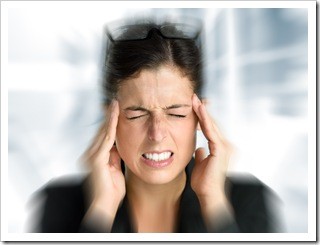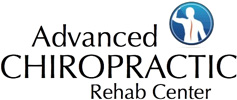 If you have ever had a headache, you have a true understanding of how debilitating they can be. Studies have shown that roughly a third of all people suffer from headaches and a more frightening statistic is that nine out of ten Americans suffer from headaches. Headaches can vary in form and intensity. The causes of headaches also differ; they include such things as certain foods, toxic fumes, preservatives, alcohol, and the most often over looked muscular tension around an area of the spine that is misaligned. Spinal misalignments are shown to be involved in up to 80% of all headaches. With the increasing use of texting and smart phones not only is the poor posture exacerbating the condition of headaches but is adversely effecting people’s overall health, the old and the young.
If you have ever had a headache, you have a true understanding of how debilitating they can be. Studies have shown that roughly a third of all people suffer from headaches and a more frightening statistic is that nine out of ten Americans suffer from headaches. Headaches can vary in form and intensity. The causes of headaches also differ; they include such things as certain foods, toxic fumes, preservatives, alcohol, and the most often over looked muscular tension around an area of the spine that is misaligned. Spinal misalignments are shown to be involved in up to 80% of all headaches. With the increasing use of texting and smart phones not only is the poor posture exacerbating the condition of headaches but is adversely effecting people’s overall health, the old and the young.
Unfortunately, our society has evolved to a “take away” or “quick fix” solution in standard procedures. This includes taking numerous medications to fight off not only the pain associated with headaches but with the counter effects they may induce instead of addressing and removing the cause of these headaches. The greatest majority of primary headaches are associated with muscle tension in the neck. Today, we engage in more sedentary activities than we used to, and more hours are spent in one fixed position or posture. This can increase joint irritation and muscle tension in the neck, upper back and scalp, causing your head to ache.
What the Research Shows
Recent research at the University of Odense, Denmark and Harvard Medical School has shown that chiropractic treatments can dramatically decrease the frequency and length of headaches as well as the number of painkillers needed for relief. With a proper spinal examination, a chiropractor is able to determine if someone has spinal misalignments and nerve blockage to the head region.
Another report released in 2001 by researchers at the Duke University Evidence-Based Practice Center in Durham, NC, found that spinal manipulation resulted in almost immediate improvement for those headaches that originate in the neck, and had significantly fewer side effects and longer-lasting relief of tension-type headache than a commonly prescribed medication.
What Can You Do?
- If you spend a large amount of time in one fixed position, such as in front of a computer, on a sewing machine, typing or reading, take a break and stretch every 30 minutes to one hour. The stretches should take your head and neck through a comfortable range of motion.
- Low-impact exercise may help relieve the pain associated with primary headaches. However, if you are prone to dull, throbbing headaches, avoid heavy exercise. Engage in such activities as walking and low-impact aerobics.
- Avoid teeth clenching. The upper teeth should never touch the lowers, except when swallowing. This results in stress at the temporomandibular joints (TMJ) – the two joints that connect your jaw to your skull – leading to TMJ irritation and a form of tension headaches.
- Drink at least eight 8-ounce glasses of water a day to help avoid dehydration, which can lead to headaches.
What Can a Doctor of Chiropractic Do?
- Perform spinal manipulation or chiropractic adjustments to improve spinal function and alleviate the stress on your system.
- Provide nutritional advice, recommending a change in diet and perhaps the addition of B complex vitamins.
- Offer advice on posture, ergonomics (work postures), exercises and relaxation techniques. This advice should help to relieve the recurring joint irritation and tension in the muscles of the neck and upper back.
We Can Help!
If you are tired of suffering from headaches on an ongoing basis and you want to find out what the cause is, our office may have your solution. Besides spinal care, our expert team will look at the need for nutritional changes, stress management, stretching, and best of all help you conquer Tech Neck!
For Your Health,
Dr. Geoffrey Bossio and Dr. Daniella D'Alessio
